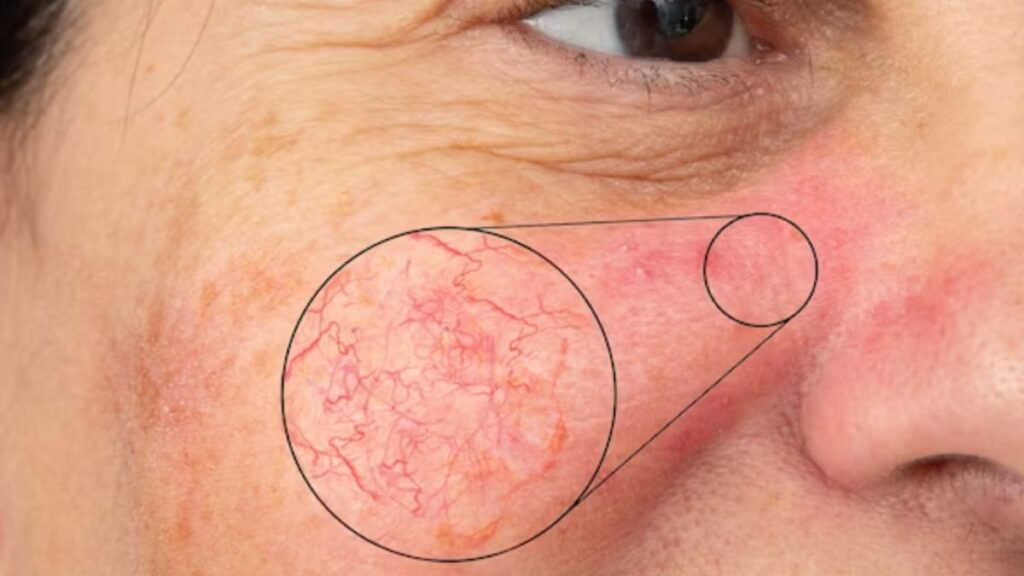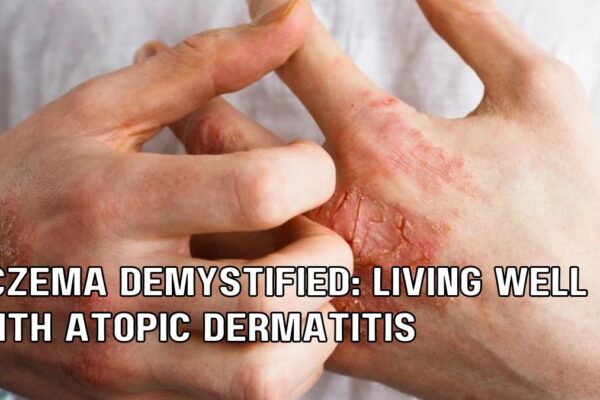Introduction:
If you’ve ever experienced persistent redness and flushing on your face, you may be familiar with the condition known as rosacea. Rosacea is a chronic skin disorder that affects millions of people worldwide. It can be a source of frustration and embarrassment, but understanding this condition is the first step toward managing its symptoms effectively. In this blog, we’ll unmask the mystery of rosacea, exploring its causes, symptoms, triggers, and treatment options.
Understanding Rosacea:
Rosacea is a common skin condition that primarily affects the face. It often begins with episodes of facial flushing, which can progress to persistent redness, visible blood vessels (telangiectasia), and the development of small, red, pus-filled bumps (papules and pustules). In some cases, rosacea may even affect the eyes, causing symptoms like dryness, irritation, and redness.

Causes and Triggers:
The exact cause of rosacea remains a mystery, but several factors are believed to contribute to its development and flare-ups. These include:
- Genetics: Rosacea tends to run in families, suggesting a genetic component.
- Abnormal Blood Vessels: Abnormalities in the blood vessels of the face may play a role in the development of rosacea.
- Immune System: An overactive immune response may trigger inflammation in the skin.
- Environmental Factors: Triggers such as sun exposure, hot weather, spicy foods, alcohol, and stress can exacerbate rosacea symptoms.

Symptoms:
Rosacea can present in various ways, and its symptoms may include:
- Flushing and persistent redness, particularly in the central face (cheeks, nose, and forehead).
- Small, red, and pus-filled bumps resembling acne.
- Visible blood vessels (telangiectasia).
- A burning or stinging sensation.
- Eye symptoms, such as dryness, irritation, and redness (ocular rosacea).

Treatment Options:
While there is no cure for rosacea, various treatment options can help manage and alleviate its symptoms:
- Topical Medications: Prescription creams or gels can reduce redness and inflammation.
- Oral Antibiotics: Antibiotics like doxycycline or minocycline may be prescribed to control inflammation and bumps.
- Laser or Light Therapy: These treatments can help reduce visible blood vessels and redness.
- Lifestyle Modifications: Identifying and avoiding triggers like spicy foods, alcohol, and sun exposure can help prevent flare-ups.
- Skincare Routine: A gentle skincare routine using mild, hypoallergenic products can help maintain healthy skin.

Conclusion:
Rosacea can be a challenging condition to live with, but with the right knowledge and treatment, its symptoms can be managed effectively. If you suspect you have rosacea or are already diagnosed, consult a dermatologist for a personalized treatment plan. Remember that early intervention and proper skincare can go a long way in unmasking the mystery of redness and flushing associated with rosacea, helping you enjoy clearer, healthier skin and improved self-confidence.












